The Kale plant is not disease-prone, but you should still watch it. Fungal or bacterial diseases can run extensively in the Kale beds if the right conditions exist. The Kale is a hardy and easy plant to grow in cool temperatures, ideal for fall gardens. But there are some common problems that you may run into trying to grow the Kale. The best way to grow healthy Kale plants is to keep your garden clean, fresh, and well-drained.
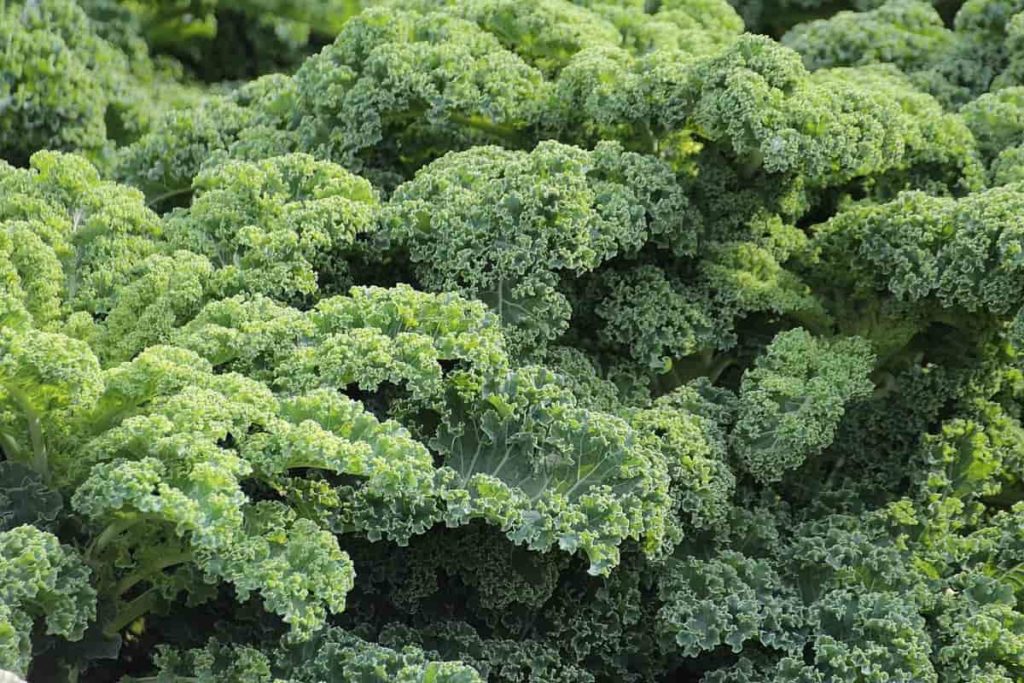
But, even the best-trend edifying gardens get infected at some point. So, no matter how clean the garden is, keep an eye on a few common diseases. The top problems that can grow on a Kale include discolored leaves, bending, leaf spots, stopping growth, dying seedlings, leggy-ness, and pest attacks. Let’s check out 18 common kale plant problems below.
18 common Kale plant problems
Kale plants are not growing
If your Kale plants don’t seem to grow, you may have planted your garden in the wrong place. Other causes of stunted growth include improper water and pH imbalance. The best pH level for growing Kale is between 5.5 and 6.8. You can check your soil pH.
Solution –Try to move your plants to a new place to see if growth improves. In most cases, you’d like to place your Kale throughout sunlight, but in hot areas, you’d like to use an area that offers a partial shade so that your plants don’t get scorched by the sun. Limestone is a huge addition to reducing acidity in the ground.
If you need to raise pH, use sulfur. Your garden is infested with pests, and weeds can also cause stunted growth of the Kale. It is better to use natural pesticides or fungicides to treat your plants to prevent infection. And remove any weed with a soft pull at the base of the stalk using your hands. Never try to weed the Kale using a sharp device, as the Kale has shallow roots that can get damaged quickly.
Kale leaves have holes
Small white butterflies hovering around your garden are a common cause of holey leaves. All those beautiful butterflies open a crowd of green caterpillars in your garden when they lay eggs. They will eat leaves and droppings on your plants, polluting your greens.
Solution – To avoid any disease, cover your Kale plants with row covers to keep butterflies out before laying eggs. Row covers protect your plants from hosting pests. You can also remove eggs from your plant leaves. Eggs are usually under the leaves. They are small and hard to see, though, so sometimes it’s easy to spray under the leaves with just insecticidal soap.
In case you missed it: Growing Kale Organically At Home – A Full Guide
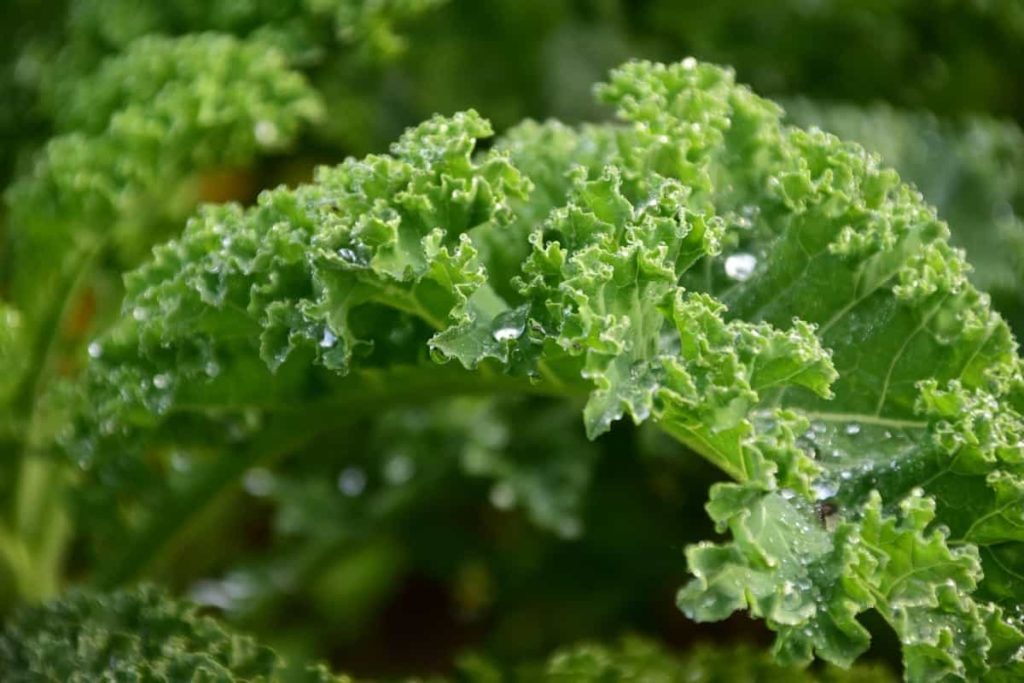
Leaves turn pale-green
Pale-green leaves occurred due to a lack of nitrogen. Then, check your soil and add nitrogen if you have soil deficiency.
Solution – A blood meal is a great way to add a little nitrogen without adding other unnecessary elements. It makes a great product under the ground that is both good for the environment and will nurture your Kale.
Wilting leaves
The Kale certainly doesn’t like hot. However, a plant prefers cold weather, with a temperature in or below 21°C is ideal.
Solution – It also needs a good amount of water. If it dries too much or the weather is too hot, the leaves will bend and wither. You may try to offer some shade by applying shade cloth on plants during their worst condition.
The leaves of the Kale are bending
The Kale needs cool weather to grow. However, there may be times when falling crops have a warm spell, causing your leaves to bend. If this is the cause of wilting plants, the leaves should return after the weather cools down.
Solution – Dehydration can also cause your Kale leaves to wilt. Using a thick mulch around the stalks can help to trap water and nutrients in the soil. And you should weed regularly to keep your plant beds full of nutrition and water.
Fungal diseases can also cause wilting. If you see small, dark spots appearing, it’s likely fungi. Treat with an antifungal drug immediately. Pests can also cause diseases to wilt by transmitting them. Insecticidal soap or neem oil can prevent these pests and other types of such attacks.
Kale leaves turn purple
If your Kale leaves are purple, you should ensure you don’t plant purple Kale instead of green Kale. But if your green leaves are suddenly getting purple, it could signify phosphorus deficiency due to low soil temperatures early in the season.
This condition usually affects young plants. Purple Kale leaves can also symbolize elevated levels of anthocyanin, a purple color that will be formed when your plants are not healthy. Cold temperatures, disease, and drought can also cause anthocyanin to be established.
Solution – Use testing kits to check the soil to determine if your phosphorus levels are low. You should also focus on grounds nitrogen, magnesium, and pH levels, as these essential nutrients keep your plants healthy. Using standard fertilizer in the 10-10-10 ratio is a great way to repair malnutrition and nutritional deficiency in your soil.
Kale seedlings are dying
The seedling was dying on multiple issues. If your plants look healthy the first day but then suddenly limp, fall, and die, you’re probably facing a problem called damping-off.
In case you missed it: Kale Seed Germination, Temperature, Time, Process
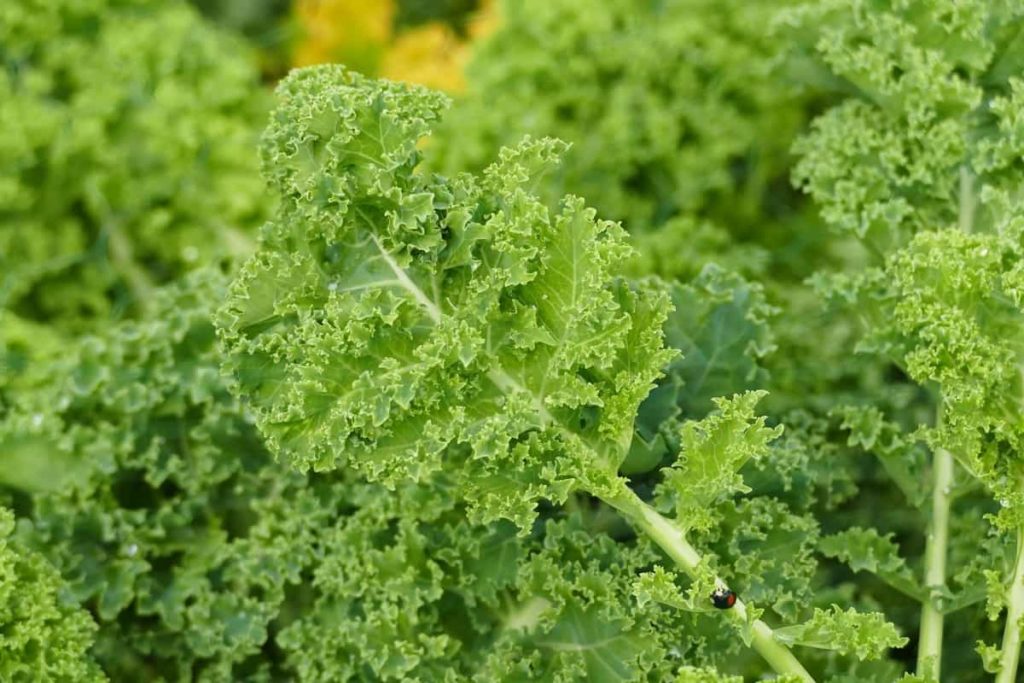
Solution – Chances are, if damping-off is your problem, you lose one or two seedlings or even all plants. You may also see seeds that don’t come out of the soil, with mushy leaves, wilted grey or brown leaves, and stunted roots with greyish-brown spots. Wet soil with bad air circulation causes damping-off. Plant your seeds in soil that is not at the ideal temperature can affect germination. Your soil should be between 21°C so that your plants can grow properly.
You should douse seeds with water so they can grow faster. If you are suddenly having trouble with flying pests hovering around the soil of your new plants, you are dealing with the attack of the fungus gnats. These small flies will kill your new plants. The fungus gnats are usually only in plants grown in trays or indoors.
Plants growing outside rarely have the fungus gnats because they are prone to large predatory insects. But you can use beneficial predator nematodes, which will eliminate the fungus gnats’ larvae.
Pests
Aphids
Aphids suck juice from the Kale leaves. So let natural predatory insects control as many aphids as they can.
Solution – You should use pesticides, soap-based products, or neem oil. You may have to spray several times.
Flea Beetles
Flea beetles make small holes in leaves.
Solution – If these pests find their way to your plants anyway, choose a pesticide and make sure the label states that the products are safe to use on the Kale.
In case you missed it: Growing Kale Hydroponically; Plant Care; Yield Guide
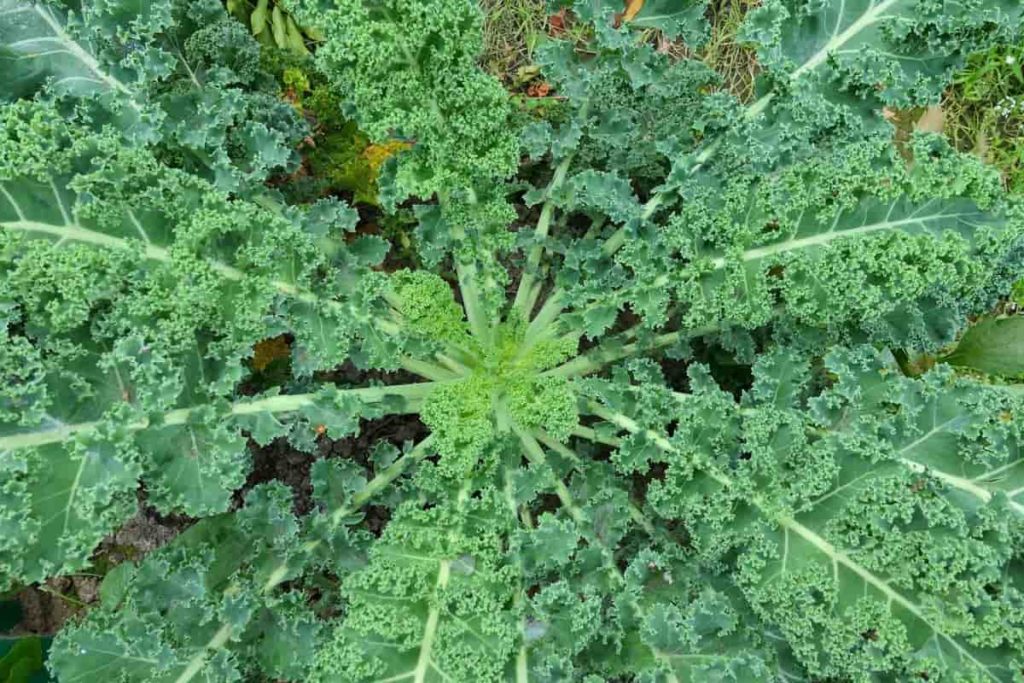
Whiteflies
These small, white flying pests rise in a cloud above the plant.
Solution – Use insecticidal soap or neem oil and spray every few days until the white fly is gone.
Cutworms
It can cut off young transplants or seedlings on the soil line. Harmful larvae are usually activated at night and hide in soil or the debris of fallen plant plants on a plant basis during the day. Larvae can display different patterns and colors but usually, turn into a C shape when disturbed.
Solution – Remove all plant residues from the soil at least two weeks before harvesting or planting. It is especially important if the previous crop is another host like Beans or leguminous covering crop. If not growing organically, apply appropriate pesticides to the affected areas of the garden or field.
Diamondback moth
Young larvae eat upper and lower levels of the leaf and can be seen when they emerge from small holes under the leaf. If the leaf is damaged, the larvae may fall from the plant on silk threads.
Solution – Larvae can be controlled organically by Bacillus thuringiensis applications. The application of appropriate chemical pesticides is only necessary if the larvae are damaging the growing tips of plants.
Thrips
If the thrips population is high, the leaves can be distorted. The leaves are covered in thick stippling and can look like silvery leaves stained with black faces. Adult thrips are light yellow to light brown, and nymphs are small and light in color.
Solution – Avoid planting with Onions, Garlic, or Cereals where many thrips can be formed. Keep mulch early in the growing season to prevent the thrips. Apply proper pesticide if the thrips become annoying.
In case you missed it: Growing Kale, Planting, Care, Harvesting – A Full Guide
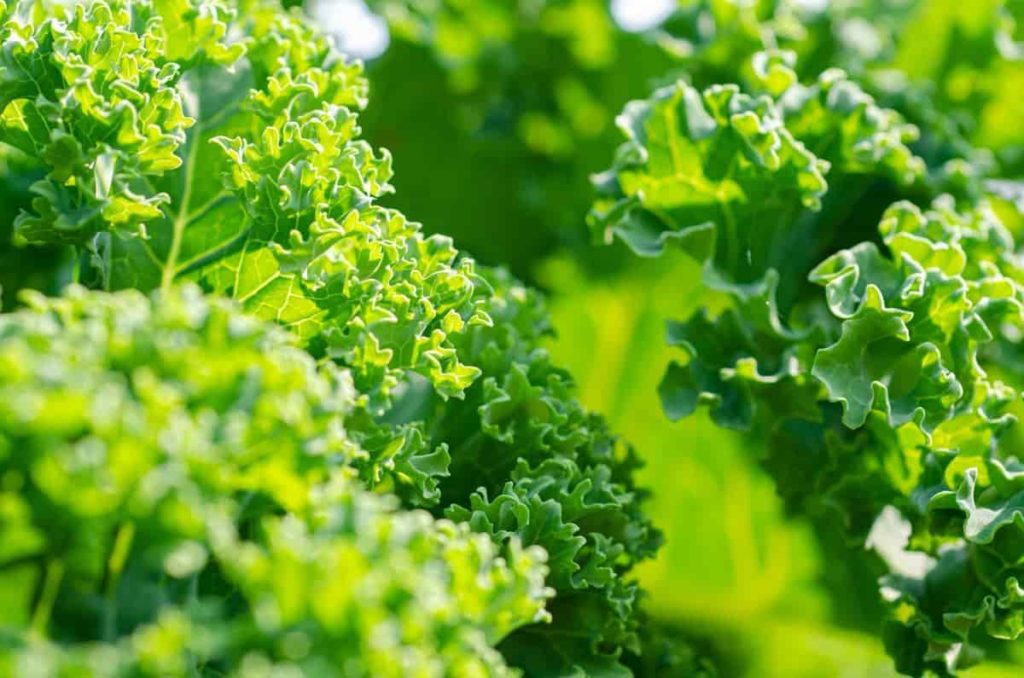
Root-knot nematode
Areas of irregular growth on plants; prevent plant growth. Plants wilt during hot afternoons during water stress. Root-knot nematodes are easily spread through the movement of infected soil.
Solution – Rotate crops for non-hosts every 1 to 2 years. Avoid transferring soil from affected fields. Planting non-fumigant nematicide may require managing severe diseases.
Diseases
Anthracnose
Small round or irregularly shaped dry spots that are grey to straw in color on leaves, many spots can cause the leaf to die. The lesions together can form large necrotic patches causing leaves to turn yellow and wilt.
Solution – Disease control depends on methods of sanitation. Before planting, treat seeds with hot water; rotate crops. Plant in a well-drained soil area, and remove all the cruciferous weeds that can act as a reservoir for the fungus.
Downy mildew
Irregular yellow spots on leaves are light brown, swollen gray growth at the bottom of the leaves. Cold, moist conditions prefer the appearance of the disease.
Solution – Remove all crop debris after harvesting; you can rotate with non-brassicas. If disease symptoms exist, it may be necessary to apply appropriate fungicides.
In case you missed it: Types of Insect Pests in Your Garden: Control Methods, Solutions, and Treatment

Alternaria leaf spot
Small dark spots on leaves turn brown to grey, and lesions can be round or angular and have purple-black margins. Lesions can make connected rings, scatter and crack the center; elongated lesions can develop on stems and petioles.
Solution – Plant only pathogen-free seeds; rotate crops. Then, you can control disease when proper fungicides are applied.
Black rot
The brown lesions of the V shape originate from the edge of the leaves, black leaf stems, and drops from the plant. The black color of the stem and brown spots on the leaves. Pathogens spread through infected seeds or by splashing water and insect movement; the appearance of disease due to hot and humid conditions is desirable.
Solution – The primary way to control black rot is by using suitable sanitation methods; rotate crops with non-cruciferous every two years. Control the species of cruciferous weeds that can act as a reservoir for bacteria.
- How to Grow Hibiscus from Flower
- Plantation Ideas for Home Decoration: A Beginners Guide
- Flower Garden Designs and Layouts for Beginners
- Planting and Spacing Techniques in Papaya: A Beginner’s Guide
- Growing Gold: Essential Techniques for Planting Pineapples
- How to Make Kalanchoe Plant Bushy: Home Remedies and Solutions
- 11 Reasons Why Your Gardenia is Not Blooming: Home Remedies and Solutions
- Eco Elegance: The Guide to Designing a Drought-Tolerant Landscape
- Gardening on a Slope: Strategies for Hillside Landscaping
- Nourish and Flourish: Top Organic Mulches for Thriving House Plants
- Everything You Want to Know about Indian Mogra Flower: Discover Uses and Growing
- Green Thumb Success: Expert Tips for Cultivating Greenhouse Pumpkins All Year Round
- Maximize Growth & Flavor: The Ultimate Guide to Companion Planting in Herb Gardens
- How to Control Rhododendron Problems Naturally: Home Remedies and Organic Ways to Fix Them
- Natural Magic: The Remarkable Benefits of Cinnamon for Plants
- Best Steps to Revive Dying Tulip with Natural and Organic Treatment
- 10 Reasons Why Your Angel Trumpet is Not Blooming: Remedies and Treatment
- How to Fix Periwinkle Leaf and Flower-Related Problems: Natural Remedies and Solutions
- How to Fix Zinnias Leaf and Flower Problems: Discover Natural and Home Remedies
- Organic Steps to Induce Lemon Tree Flowers: A Comprehensive Guide
- Bloom Booster: Crafting the Perfect Homemade Bougainvillea Fertilizer
- Optimizing Growth: A Guide to Applying NPK Fertilizer for Potted Plants
- 10 Best Homemade Fertilizers for Rubber Plant: DIY Recipes and Application Method
- How to Boost Female Pumpkin Flowers: Effective Steps for More Flowers and High Yields
- Transform Your Indoor Garden: Top Benefits of Pink Salt for Houseplants
- 10 Best Homemade Fertilizers for Peacock Plants (Calathea): Easy DIY Guide
- Unlock Blooms: 9 Reasons Why Your Potted Chrysanthemum is Not Blooming
- 8 Reasons Why Your Potted Hibiscus is Not Blooming: Fix it with Simple Solutions
- Unlock Blooms: 9 Key Reasons Your Potted Frangipani Won’t Flower
- 10 Reasons Why Is My Ice Plant Not Blooming: Remedies and Treatment
- 10 Reasons Why My Potted Hydrangea Not Blooming: Treatment and Remedies
- 10 Reasons Why is My Wisteria Not Blooming: Remedies and Treatment
- 10 Reasons Why is My Goldfish Plant Not Blooming: Remedies and Treatment
- Maximize Your Space: Ultimate Guide to Balcony Gardening with Grow Bags
- 10 Reasons Why Your Iris is Not Blooming: Remedies and Treatment
- 10 Reasons Why Your Anthurium Plant is Not Blooming: Treatment and Remedies